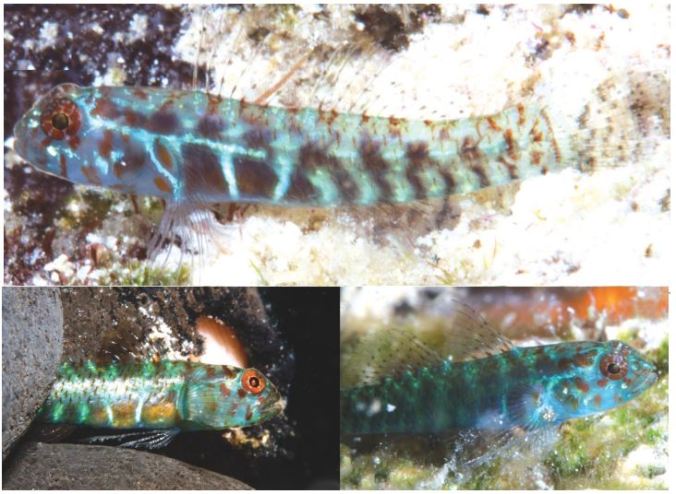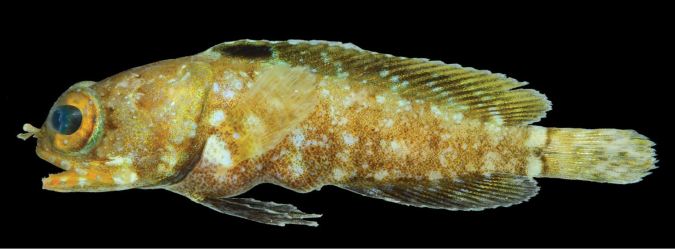I never liked going to school. Not as a kid, not as a teenager, and not even as a young adult. Maybe I just disliked being bored so often? Even in the classes I was interested in, I felt that just absorbing all the knowledge in world was not exciting. My impression was that science already knew everything and that new discoveries were pretty much impossible. That science had somehow “stopped”.
Well, let me tell you one thing, it most definitely has not! I was not learning “all the knowledge in the world”, in fact LOTS of new things are discovered all the time! Since this blog is about ocean critters, let’s look at some of the critters that have recently been discovered. In the last year alone, new seahorses, frogfishes, gobies, jawfishes, and many other species have been discovered. So if you thought you’d seen it all, think again 😉
Seahorses and relatives
A new species of pygmy seahorse was described 3 months ago by Graham Short and colleagues. This ridiculously cute little seahorse lives in Japan and is called Hippocampus japapigu (=Japanese pig seahorse). These little wonders are less than 2cm in size and have a wonderful honeycomb colour pattern. Unlike some other pygmy seahorses, the Japanese pygmy seahorse does not live in seafans, instead it can be found in hydroids, algae, or soft corals.

The newly describe Japanese pygmy seahorse (Hippocampus japapigu). Photo: Richard Smith
Even more recently, less than a month ago, another new pygmy seahorse species was discovered in South Africa. The first ever pygmy seahorse in South Africa! Dive operators in the Sodwana Bay region had found this small seahorse and asked pygmy seahorse expert Richard Smith about it. Together with IUCN seahorse expert Louw Claassens he went for an expedition and has confirmed the new species. It has not got a name just yet, but should be officially described sometime next year.
During the same expedition, Richard and Louw also found a new species of pygmy pipehorse! You might have never heard of pipehorses, but they are just fantastic. Sort of like a seahorse that disguised itself as a pipefish, or maybe the other way around?

A newly discovered, still unnamed pygmy pipehorse from South Africa. Photo: Richard Smith
Frogfish
Big news from Australia as well! A new frogfish species was described in the journal Copeia this week. The Narungga frogfish (Histiophryne narungga) is found in South and West Australia, and was named after the indigenous people living in the area. The beautiful new frogfish lives mostly in shallow water, where it does what frogfishes does best: mimicking sponges or other benthic organisms, hoping to catch unsuspecting prey that swims by. This small (less than 10cm), new frogfish is very much on my “critters to see before I leave Australia”-wish list!

Narungga frogfish (Histiophryne narungga): A new Australian frogfish species. Photo: Rudie Kuiter
The researchers describing the Narungga frogfish, Rachel Arnold and Theodore Pietsch, are pretty much the rock stars of the frogfish world. Together they have described 9 new frogfish species in the last 10 years, the most famous of which is the Psychedelic frogfish!
Gobies
I’ll be honest, for someone who studies cryptobenthic fishes, I don’t know nearly enough about gobies. Luckily, other researcher do know a lot about gobies and they seem to be good at finding new species as well. This year a new species was discovered from the west Pacific Ocean. The polkadot dwarf goby (Eviota maculosa) lives in Indonesia, Australia and Pohnpei. Its small size, less than 2cm, probably explains why it has taken researchers so long to realise this was an undescribed species.

Eviota maculosa, a new goby species from the west Pacific. Photo Mark Erdmann
Jawfishes
If you are not a keen muck diver or underwater photographer, you can be forgiven for not knowing about jawfishes. These cryptic fish live in holes in the sand and don’t venture out very often. Most notably, they are “mouthbrooders“, fish that hatch their eggs in their mouths. This week, two new jawfishes were described from Brazil. Thiony’s jawfish (Opistognathus thionyi) and the Brazilian dusky jawfish (Opistognathus vicinus) both seem to be endemic to Brazil, meaning they do not occur anywhere else. Thiony’s jawfish seems to live deeper than the Brazilian dusky jawfish, but otherwise, not much else is known about these new species.

Thiony’s jawfish (Opistognathus thionyi) from Brazil. Photo: Raphael M. Macieira

Brazilian dusky jawfish (Opistognathus vicinus) from Brazil. Photo: Raphael M. Macieira
This list of new critters is by no means complete. Many more species have been recently discovered, and many more will be discovered in the future. I find it very exciting that science isn’t ready yet and that there is so much more of the amazing natural world left to discover. If that doesn’t make you want to become a scientist, I don’t know what will… (We often have cookies in the office if that’s more your thing?)
Pingback: The discovery of the Sodwana seahorse (Hippocampus nalu), Africa’s first pygmy seahorse | Critter Research
Pingback: How an underwater photo led to the discovery of a tiny new seahorse species - The Global Centre for Risk and Innovation
Pingback: How an underwater photo led to the discovery of a tiny new seahorse species | 4eyenews
Pingback: How an underwater photo led to the discovery of a tiny new seahorse species | Capital
Pingback: Africa: How an Underwater Photo Led to the Discovery of a Tiny New Seahorse Species – Newz Africa
Pingback: Africa PORTS & SHIPS maritime news 21 May 2020 - Africa Ports
Pingback: How an underwater photo led to the discovery of a tiny new seahorse species – Quick News
Pingback: A Tiny New Seahorse Species Captured on Camera - NewsDay24.com